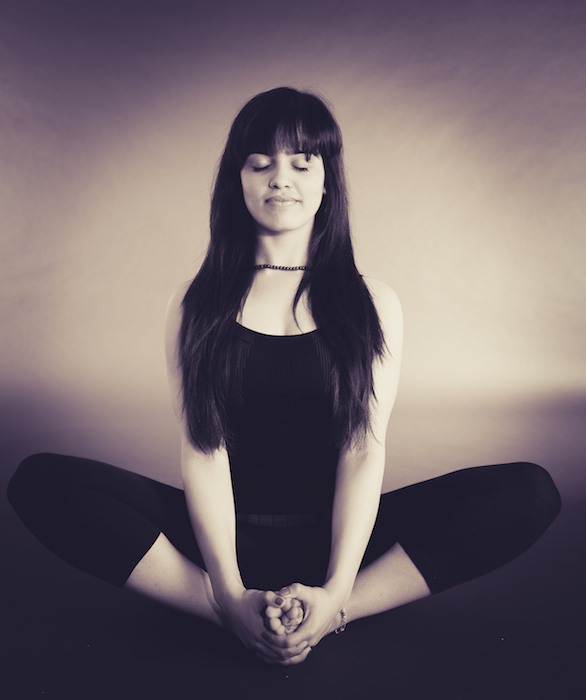Meditation has done more for me than any other practice.
It helped save my life.
Without it, I think I would lose my mind. It has played a key role in my sanity through the first year and a half of my new life in sobriety.
My crazy, noisy, chaotic, relentless and unforgiving mind was one of the things that fueled my addictions over the years. I just wanted my head to give it a rest.
I just wanted it to shut up!
As a result of meditation practice, I finally have a quiet mind most of the time, and it is amazing.
Like any beneficial thing I encounter that improves quality of life, I want to share it with the world so that everyone can feel the magic that comes from a meditation practice.
While being simple, meditation is not easy at first. At least it wasn’t for me and my nonstop mind.
Here are some tips for how I started my practice:
1. Breathing
In the beginning I would get so caught up in my thoughts, I was forgetting to breathe. Breath is the cornerstone of meditation, it keeps us anchored and present. By focusing on my breath I was gradually able to slow the thoughts racing through my head, and over time it became quiet. I would consciously think “breathe in the moment, breathe out yesterday.”
I would picture the breath traveling through my body, filling up my lungs, oxygenating my blood. When my thoughts would wander, I would smile at myself, give thanks to the thought, and come back to my breath gently. No criticism, no judgement.
2. Mantras
Mantras were my anchor when I started meditating. My mind was forever tripping over the things I needed to work on, what I said two hours ago and so on. Sometimes my mantras were as simple as: “I am exactly where I am meant to be,” or “Everything is okay as it is,” or, “I am okay.”
It’s that simple.
At the start, I didn’t necessarily believe the words, but somewhere along the journey I started believing them. And now when I use my mantras they comfort me like an old, familiar, fuzzy blanket and a cup of tea on a cold day.
Like the breath, they bring me to the present and anchor me to the moment.
3. Imagery
I am a visual person. Envisioning pictures in my head—like I mentioned I did with my breathing practice—helped me immensely. As I breathed, I would visualize. When I started doing chakra work it helped me to envision each color that is linked to each chakra. Or I would envision a white healing light.
When my practice was geared toward healing it was a crisp, clear waterfall flowing through my chakra system, cleansing it. When I was aiming for quieting my mind I would picture a crisp mountain lake, one of my favorite places from where I used to live, with the water still and undisturbed reflecting the beautiful sky above.
We can use anything that appeals to us visually.
4. Walking Meditation
Like I said, when I first started practicing my head was everywhere but the moment. I was so used to doing things on auto pilot and worrying about things outside my control, I never realized how absent I was in any given moment until I started minding my thoughts. I received wisdom from a 96-year-old lady, Grandma Helen, who told me to try this. “When brushing your teeth, stand there and say, ‘Right now I am brushing my teeth. Here I am, brushing my teeth.’”
It seemed so silly but I started practicing that. Then I started applying it to all activities. While walking, I would say to myself, “I am walking.” I would feel my feet touching the ground. I would look around at the sky. If I was washing dishes, I would pay attention to the warm water and soap suds on my hands. It was a constant vigil at first. Telling myself what I was doing at any moment seemed absurd but it truly worked to help me start being present throughout my daily life.
5. Writing.
I found that by writing out whatever thoughts were in my head before I would practice helped immensely. I am not much of a talker; I keep stuff in my head and analyze things over and over—which was part of what kept my head so noisy. I needed to know why about everything.
Once I started dumping everything out on paper, my head was quieter when I would sit down to practice. By making to-do lists I wasn’t distracted with everything I had to do after I meditated. By journaling, I was less hung up on circling emotions.
And by practicing my mantra of, “It doesn’t matter why, I’m not in charge,” I stopped having the need to analyze everything to a T.
I remember the day I was sitting on my front porch, and the late afternoon sunlight was streaming through the trees and there was a gentle breeze making the leaves and flowers sway. A bird was chirping, and I was overcome with the pure beauty of the moment, and with the feeling that everything was perfect. Nothing mattered but that moment and the raw beauty of it. I felt so alive.
Words do it no justice, but that was serenity and contentment I was experiencing.
I was present in that moment.
The pure joy of that moment was amazing.
I knew than that my practice was working.
I have those moments often now, after a year and a half of daily practice. And when I don’t have those moments and I feel crazy and chaotic I can stop and breathe mindfully and I immediately feel a bit of that serenity.
Sometimes I can sit with the chaos and easily slip into my practice and find stillness no matter where I am. Other times I sit down to practice and I start well, but then my mind wanders and I have to use my beginner techniques that I’ve shared here.
Thanks to my daily practice, I no longer beat myself up over this.
Because I am okay exactly where I am.
˜
Author: Lindsay Carricarte
Image: Pexels
Editors: Travis May; Catherine Monkman








Read 9 comments and reply